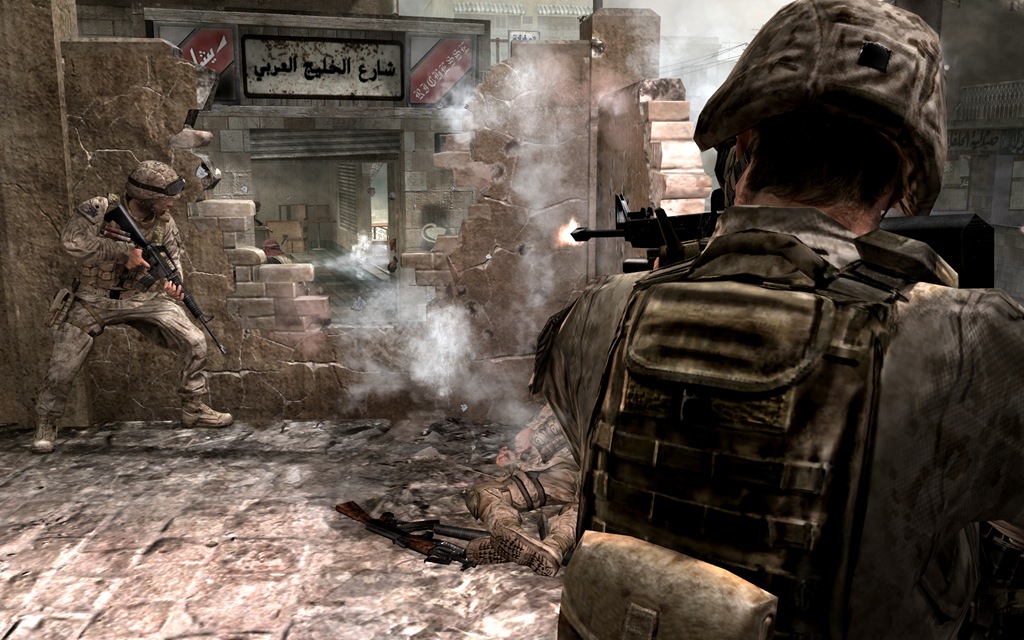It was recently reported that the average age of a gamer is now 35. As someone leaving the warm, homely confines of their twenties and voyaging into the darkness of their thirties, my mind has turned of late to the symbiotic relationship that exists between players and their games. As video games progress as a medium and the players’ ages increase, this affinity is one in constant flux.
Many people have written about Modern Warfare 2’s now infamous No Russian level and whether or not video games have matured enough to justify that kind of content. Some of the poorer reporting has failed to consider whether gamers themselves are now of a maturity to tackle difficult subject matter, instead regressing to the default stance of ’games are for kids’. Ironically, beside these reports you will find adverts for games such as Brain Training, which is specifically aimed at the people skewing that average age higher and higher.
Modern Warfare 2 isn’t the only game attempting to promote maturity to better reflect the audience’s changing demographics. The Grand Theft Auto series has long championed guns and violence, while last week saw the leak of a topless scene in the forthcoming Heavy Rain. Of course, we are presuming here that the term ‘maturity’ is somehow determined by the amount of sex and violence is in a game, a point of view that is naïve at best.
Flower is another example of a fantastic game aimed at an older audience, yet a contrasting one. It challenges what we think of as traditional gameplay without the need of blood and breasts to achieve maturity. Then there’s Oddworld: Abe’s Oddysee, which housed a rich, engaging world and attempted to tell us something about morality with explicit messages about worker’s rights, labor exploitation and disability. It was one of the first games where simply moving a character from A to B or solving puzzles was secondary to considering the potential outcomes of your actions.
So what defines the maturity of a game? Is it the content, the intended message or the intended audience? Which game is the true bastion of maturity that we all seem to covet so highly?
The answer must take something from all three aspects to be truly adult and nothing has done that yet. Infinity Ward tried valiantly but Modern Warfare 2’s message was ultimately muddied in a rush of snowmobile racing and prison escapes. It is almost as if gamers have moved on and grown up while those creating the games are still struggling to come to terms. It isn’t hard to understand why some are late to the parade when you look at the most popular console on the market.
As popular and brilliant a platform as it is, the Wii has done nothing to help gaming grow up. As the console most in the public eye, it has helped reinforce the idea of gaming as a hobby for children. Nintendo did this once before with the Nintendo Entertainment System.
A lot of people forget that in the early 80s gaming was beyond the budget of most kids. Consoles like the Atari 2600 were largely the remit of adults and hence there was a large market for games aimed squarely at those above the age of 18. These games tended to be inexpensive, advertised towards the back of the tabloids and universally terrible like the horror that was the crudely pornographic Custer’s Revenge.
With the introduction of the NES and then the Super Nintendo and Sega Genesis in the early 90s, gaming moved from an expensive hobby to a children’s toy. Games started to line the shelves of Toys R Us. There were far more arcade ports back then and like their cabinet brethren, games were incredibly difficult. Developers were keenly attuned to the fact that kids had a lot of surplus time and not a lot of games and tweaked the difficulty accordingly.
But all of us who were gamers in those halcyon days are now victim to Father Time’s wiles. Free time is decimated by jobs, partners, and even (gulp) children of our own. Not only do shorter games appeal these days to us, but anything under eight hours receives a great big tick. Some disappointment was expressed amongst the community when Modern Warfare 2 was pegged at around five and a half hours. Personally, I couldn’t have been happier, safe in the knowledge I was buying the game predominately for the multiplayer.

Modern Warfare 2’s shorter length is a godsend for those with not much time to spare.
When we consider what makes a game mature, it is important to think of the content and what it adds to the medium. However, we must also be careful to take into account who the game is aimed at. Sex and violence are a complete red herring here because nine times out of ten they aren’t included for adults but for adolescent boys on power trips. Small things such as game length are a far better indicator. Specific features can also help, like the one found in New Super Mario Bros. Wii, which allows the game to play itself through challenging areas until you feel comfortable to pick the controller up and retake control. Nintendo undoubtedly had younger players in mind with this feature, but I also envisage a fair few Wiimotes saved from destruction by frustrated oldies like me.
We are in a golden age for gaming as evidenced this year by titles like Flower, Batman: Arkham Asylum, Uncharted 2, and Modern Warfare 2. We are also seeing developers attempting to cover dangerous and brave new ground in these titles, better reflecting the interests and concerns of those playing. In short, we are seeing developers start to adapt to the mature gamer. If what we are seeing in 2009 is a trend, as we get older and older, gaming will get better and better.
”